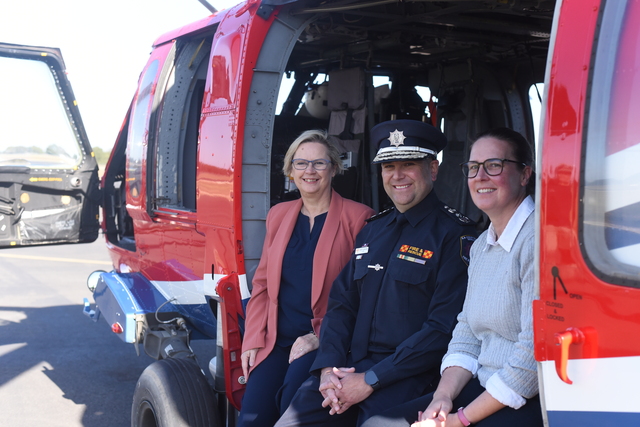
Charlotte Varcoe
A NEW pilot program will be led by Primary Producers SA (PPSA) and the Department of Primary Industries and Regions (PIRSA) to help industries and the government better prepare for the impacts of natural disasters and climate change.
The state government announced $770,000 to be injected into the project during last week’s Disaster Resilience Summit.
About 80 representatives from across industries came together to discuss how they could work together to ensure preparedness for future disasters.
Key natural disaster risks were identified for each industry as well as what was required from both government and industry to reduce the impact of such events and how to best aid recovery.
The expected primary outcome of the project will be an “increased understanding” of industry vulnerabilities and the commitment to shared responsibility between government and industry to address gaps.
The pilot program is expected to focus on the dairy, forestry and wine and grape industries to begin with.
South Australian Forest Products Association (SAFPA) chairperson Tammy Auld said the summit was a great success.
“We have managed to bring together nearly 80 people from across different industries, government organisations, local authorities, stage agencies and so on,” Ms Auld said.
“There has been some really great discussion throughout the day, looking at how we can bring risk mitigation and fire response and planning to the forefront of our region not only to protect our industries, our valuable assets but to protect our communities for the future and protect our infrastructure which supports us.”
Ms Auld said the forestry industry across the state spends about $30m per year in protecting assets and preventing fires.
“We have got 300 trained firefighters which roll out every year to protect our assets and do a lot of work for the community surrounding our assets,” she said.
“As well as appliances such as the blackhawk being available to us throughout the season.”
She said the appliances helped the forestry industry protect the broader community and its infrastructure across the Limestone Coast.
Minister for Primary Industries and Regional Development Clare Scriven praised the pilot program stating it would represent a number of commodity groups.
“This particular pilot is starting with dairy, forestry and wine grapes and will potentially set the path for similar programs with other parts of the industry such as grain or livestock,” Ms Scriven said.
“It is really important that it is being driven through PPSA and they are able to bring together the various partners to look at where the vulnerabilities are for each of those sectors, working with those sectors to identify opportunities for better preparedness and better resilience going forward.”
Ms Scriven said it was an important part of the preparedness for disasters to not only include the immediate response but also the response of days, weeks and months afterwards.
“It is about the long term recovery but also using the lessons from those events that have already occurred to be able to prepare for the next events if and when,” she said.
“It is a matter of always learning from the past events, we have had bushfires and smaller fires too and all of these events are complex and compounding into the future in the sorts of things that we have to consider we might need to face.”
She said it was a “matter of learning” from all the events and “listening to the experiences” people have had.
“A high level of awareness of the need to be prepared and the fact that the situation we are facing today is different to what we were facing 20 or 50 years ago with the changes we are seeing in the climate,” Ms Scriven said.
“There are more complex issues and we are seeing shorter times between some of which means there is less time to recover and we need to be looking today and everyday as to how we prepare for that.”
She said other things identified were the types of events were “many and varied”.
“We are used to dealing with bushfires and we have since had floods, drought has always been around, there are heat waves, animal diseases, plant diseases and so it was partly an acknowledgement that we have had all of these different types of challenges and know the risks are increasing,” Ms Scriven said.
“In other areas they are increasing because of climate change so it is an acknowledgement we need to face and there is a lot of commonality over how we can prepare for them.
“There are also specifics that need to be looked at, which is one of the reasons for the pilot program looking sector by sector and where those opportunities are.”







